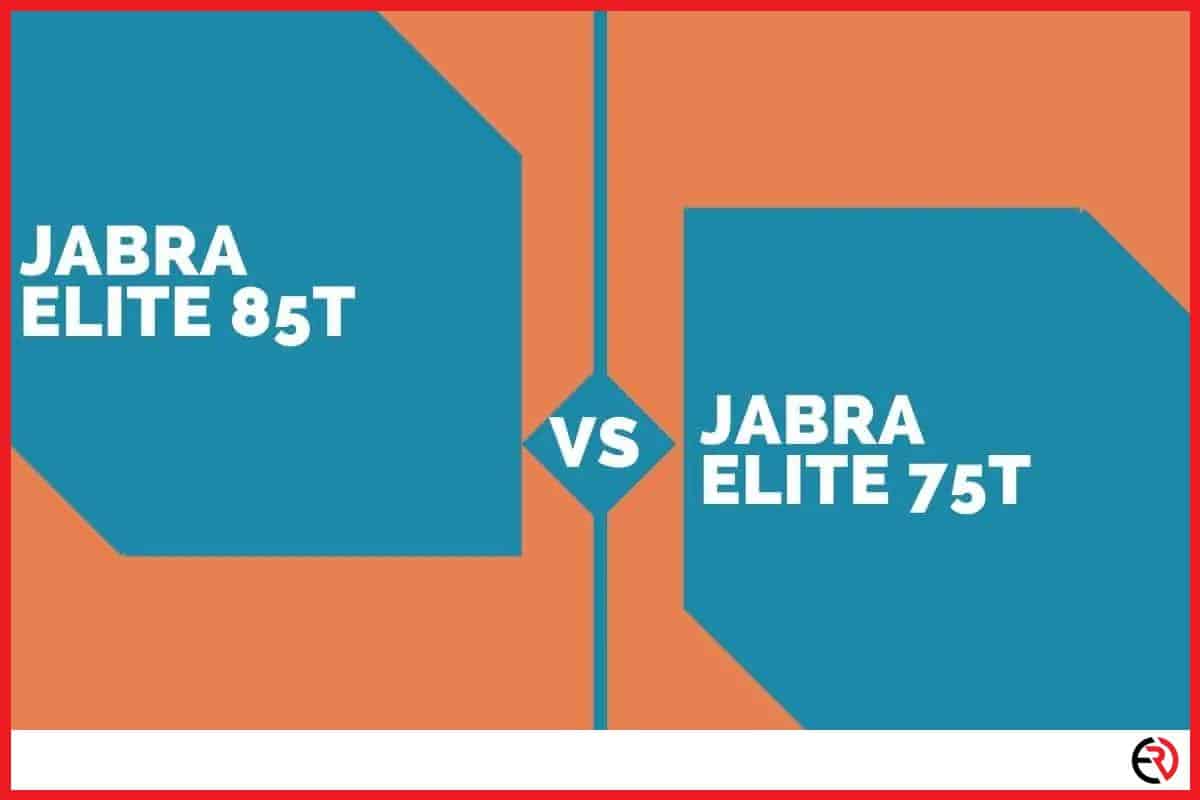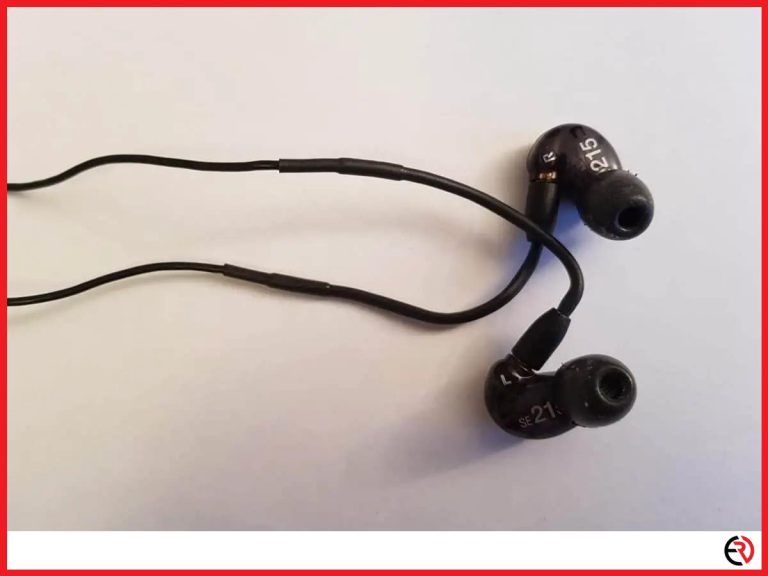Jabra Elite 85t Vs Jabra Elite 75t: Which is Better?
This post may contain affiliate links which means that, if you choose to make a purchase, I may earn a small commission at no extra cost to you.
If you are thinking that there is going to be a clear winner between the Jabra Elite 85t and the Jabra Elite 75t, you may realize that it is hard to improve on perfection. The same comparison could be made when Jabra introduced the Elite 75t after the success of the Elite 65t.
However, the lesson isn’t one in showmanship, rather it is one in perfectionism. It seems like Jabra isn’t satisfied being the best truly wireless earbud engineers. This Danish sound engineering company needs to retain that title every year with every new release. Check out below for the full comparison and review.
The Verdict: Which One Should I buy?
The Jabra Elite 85t is the best choice. They have improved almost every aspect of last year’s Elite 75t. There aren’t any groundbreaking changes here, but rather several tweaks which makes the 85t one of the best true wireless earbuds on the market today. The Jabra Elite 75t is still a great choice. It is considerably cheaper being a year older, and it has higher dust and waterproof rating than the 85t.
Comparison Table: Show Me the Stats!
It is hard to describe the differences using just words. The Elite 85t is an updated Elite 75t. However, with all new technological improvements, there are and always will be some compromises. The Elite 75t does win in some areas very important to most consumers. Here are those areas and the full breakdown.
| Feature | Jabra Elite 85t | Jabra Elite 75t |
| Water & Dust Proof | IPX4 | IP55 |
| Earbud Battery Life | 7 Hours | 7.5 Hours |
| Charging Pack Life | 24 Hours | 20.5 Hours |
| Wireless Charging? | Yes | No |
| Digital Assistants | Siri, Google Assistant, Alexa | Siri, Google Assistant, Alexa |
| Audio Codecs | SBC, AAC | SBC, AAC |
| Speaker Sizes | 12 mm | 6 mm |
| Noise Cancelling | Dual ANC | Digital ANC |
| Installed Mics | 6 | 4 |
| Bluetooth | 5.1 | 5.0 |
| Colors | titanium black, gold beige, copper black, black, gray | black, titanium black, gold beige |
| Price | Check the latest price on Amazon | Check the latest price on Amazon |
In Depth Feature Analysis
To learn more about each aspect, you need to understand what truly wireless earbuds are important to the user. You need to learn about how they are used and why they are such a big part of the market. For that, you can read the TechRadar review here on the difference between wireless and truly wireless.
For technical reviews, you can get your fill from the following feature comparisons between the Elite 85t and the Elite 75t.
Sound Quality: Winner = Jabra Elite 85t
Both have excellent sound quality. They are built on the same type of earbud platform. However, with small tweaks and improved tech the newer 85t shines just a little more brightly. There are two aspects to the sound that are important in the updated version.
Before that, however, what is the same about them is the frequency range. Both versions have a low-frequency limit of 20Hz. This is the industry standard. It is true that there are a few brands that go down to 5 Hz. However, at that level, you won’t hear any difference. At the high end, they both have an upper limit of 20,000Hz. Again, this is the industry standard and the most common range for most high-end earbuds on the market.
The first benefit of the newer Elite 85t is the driver unit size. The drivers are the speakers that are the functioning part of the earbuds. These features help deliver the sound to your ears by converting it from an electrical signal to a sound. Larger drivers are more powerful as a whole and can deliver a sound that feels more “full.” Their main benefit is the ability to pump out deeper beats.
Pimped out cars have massive speakers in the back that shake windows not because they are loud, but rather, the drivers are massively larger and can emit deep notes that physically vibrate the surrounding area.
The Elite 85t has 12 mm, drivers, as compared to the 6 mm drivers in the older Elite 75t. This is a significant bump up. Maybe on the top 10% of earbuds have drivers above 9.5 mm in size.
The second benefit to the sound is the shape of the earbuds. Jabra moved from a circular shape to an oval shape in the Elite 85t in order to open up the backs of the earbuds for more air. This is their way of creating an “open-backed” earbud. This has made them revert to the 65t style of in-ear silicone tip, but with different connections and the improved sound, you are sure to forgive them.
Water resistance: Winner = Jabra Elite 75t
If you’ve never seen an IPX rating or have seen one but don’t know what it is, it is worth reading a little bit about it. Basically, the IPX rating describes the ability for a piece of technology to withstand dust and water. By withstanding, the tech would need to be protected against the intrusion of dust or water into the inner electronics. You can see that this would be a big deal for athletes who work out and train outdoors. They can’t only go out when the weather is nice.
If this were a review of the best over the ear Bluetooth headphones, IPX wouldn’t be as critical. However, this is between two earbuds that are often used exactly for the purposes of why IPX ratings are so critical.
IP stands for International Protection or Ingress Protection, depending on the manufacturer. There are two numbers that may follow IP. The first “X” refers to dust resistance, which ranges from 1 – 6, or X if it is not tested. The second “X” refers to water resistance, which ranges from 1 – 9, or X if it is not tested. An IP rating of IPXX hasn’t been tested for either dust or water resistance, and an IP rating of IP69 is the most dust and waterproofed a device can be rated.
From the comparison table above, you may have noticed that the Elite 85t isn’t rated as highly as the Elite 75t. The 75t was Jabra’s active model. This may mean that Jabra may come out with an Elite Active 85t, but that is mere speculation.
The Elite 85t has an IP rating of IPX4. This means that the Elite 85t is only rated as being “splash-proof” and “sweat-proof,” with no mention of dust resistance. Splash-proof does not equal rain-proof. It just means that it can survive splashes of water from any direction.
The Elite 75t has an IP rating of IP55. This means that the Elite 75t is rated as being fully protected against small jets of water coming from a 12.5mm nozzle from any direction and it is almost completely dust-proof. You can assume that this means it will survive any long run or bike ride in the rain. However, you still shouldn’t swim in it unless it ups the IP rating to 7 or 8. An IP rating starting at IPX7 is considered fully waterproof.
Price: Winner = Jabra Elite 75t
Price always matters. No one wants to buy the right thing at the wrong price. It isn’t about the money, but rather, it is about the principle. So, are these earbuds worth the price? Yes, inherently, both are worth the price. However, the new models of any tech that is just introduced will always be higher than the older versions, even when there are few improvements.
Running shoes change drastically in price from year to year. Yet, sometimes, the only difference is the color of the skin. Buying the older version can sometimes be the fiscally responsible thing to do. Plus, you can brag about it to all of your friends.
The Elite 85t is not overly expensive in any regard. On the contrary, it is very competitively priced as compared to its competitors. Some sound tech can be unimaginably expensive when you get to the higher end. Jabra has continually allowed their superior products to be priced fairly and reasonably. This makes the Elite 85t a standout and a solid investment.
However, the Elite 75t is still the better deal. Why? It is the better deal because the price has been discounted but it is still a better product than the majority of other earbuds on the market. This means that you can buy the “outdated” version for a steal, and still have a better-quality listening experience than most others.
Noise Cancelling: Winner = Jabra Elite 85t
If you have ever been in a crowded room or even in a room with a loud child or other family members, you know the pains of straining to hear the music or dialogue coming from your headphones. Instead of straining, sound engineers began including active and passive noise cancellation in consumer technology.
Bose has always been the leader in this field, but usually only with over-ear full headphones. Most other developers, like Jabra, easily include high-end noise cancelling tech into their devices, and there is no exception to that thought with the Elite 85t and 75t.
These do not allow for passive noise cancelling. These provide for active noise cancelling (ANC). The difference between the two types is striking. Passive noise cancelling just refers to a material that physically blocks the exterior noises from hitting your eardrum. ANC technology is much more sophisticated and effective. It uses microphones to identify the frequency of the nuisance noise and broadcasts a frequency in opposition to it. The nuisance noise is canceled out before hitting your eardrum.
The Elite 75t has gone through a software upgrade, which allows it to use its exterior microphones to identify nuisance noises and then eliminate them. However, most ANC devices have interior and exterior microphones to operate more efficiently. The Elite 75t wasn’t originally packaged with ANC and this firmware update is a later, and important, update.
The Elite 85t has better ANC technology because it was built with ANC as an important feature. It pairs internal and external mics in the earbuds for a larger frequency nuisance identification. Where the Elite 75t only picked up on low noises like trains, the Elite 85t can pick up low noises and high noises like your little sisters fighting in the other room.
Comfort: Winner = Jabra Elite 85t
Comfort matters. We all know that. When something is stuck in your ear for hours a day, you want to make sure that it won’t start to bother you after a few minutes. The Elite 75t is a great pair of earbuds. However, the Elite 85t has only improved on the versatility of the silicone tips. They have more varieties of sizes and include all of the standard connections for an improved seal around the inner ear.
Design: Winner = TIE
Both look exactly the same. Sure, there are slight differences. The Elite 85t has a more oval shape to accommodate the larger drivers, while the Elite 75t has a more rounded shape. Sure, the containers slightly different as well. The travel container to the Elite 85t is almost a few millimeters bigger! Inappropriate. What was Jabra thinking? It’s like the size of Godzilla! You get my point.
The designs are great on both and the slight differences are hardly noticeable. They don’t weigh much either. The older Jabra Elite 75t are the lighter earbuds at 10.1 grams. The newer Jabra Elite 85t are slightly heavier at 14 grams. The difference is barely anything. The increase in weight is about the weight of 1.5 dimes, 0.9 nickels, or 1.5 pennies. Whichever currency you compare it to, the weight is hardly noticeable.
Focus on the other features besides the design if you are stuck on your choice. They both tie in this category.
Battery Life: Winner = Jabra Elite 85t
First, you should understand that there are four numbers associated with battery life. Don’t confuse them. Here is a quick comparison breakdown chart. It is important to understand that having the ANC on does drain the battery quicker. However, this is true for all headphones.
| Battery Life | Jabra Elite 85t | Jabra Elite 75t |
| With ANC Off | 7 Hours | 7.5 Hours |
| With ANC On | 5 Hours | 5.5 Hours |
| Charging Case Life (ANC On) | 25 Hours | 24 Hours |
| Full Charge Time | 1 Hour | 2.3 Hours |
It may seem close, but the Jabra Elite 85t is the clear winner. Why? The Jabra Elite 85t supports wireless charging. With a charge time of one hour for 5 hours of ANC listening, you can easily outlast the older Elite 75t with double the audio tracks due to the slow charging time. All of the other factors are relatively the same and have little effect on the decision.
Controls and Functions: Winner = TIE
Both of the versions, the Elite 85t and the Elite 75t use the Sound+ app as the digital equalizer. This app is highly functional, highly intuitive, and highly useful for just about anyone. With preset sound standards, you can fully customize your earbuds to both match your music and your environment. It even comes with a few white noise sounds for a little non-music distraction.
Mic Quality: Winner = Jabra Elite 85t
More mics usually win the day. The only time they don’t is if they are misplaced or of very poor quality. This isn’t the case with the newer Jabra Elite 85t. Jabra went from 4 to 6 mics which significantly improves the quality of the audio for phone conversations.
When you are talking to colleagues, bosses, friends, or family, you don’t want to be misheard. You also don’t want to be that talker with all of the wind and background noise. Instead, you want and need to be heard. Six is better than four. The Jabra Elite 85t is the clear winner here.
Conclusion: Don’t Settle for Second Class Buy the Elite 85t
So, in review what did we learn? We learned that there are generally two main differences between the older Elite 75t and the newer Elite 85t. First, the older Elite 75t holds the important ability to retain usefulness in the weather. With a significantly higher IPX rating of IP55, it can be fully used in outdoor training sessions without fear of water or dust intrusion into the electronics.
The Elite 85t is best used while at indoor gyms for only sweat and splash protection. This is a significant decision factor if you are getting earbuds for outdoor use. Ask yourself if there is a possibility of running or cycling in the rain, you may be better off sticking with the older Elite 75t version.
However, if you won’t be wandering through any thunderstorms while on a business conference call, the Elite 85t is the upgrade you need in your life. They are more expensive, but the price comes with the benefit of the latest ANC tech, drivers, wireless charging, and increased microphone numbers. These advancements and tweaks absolutely improve the listening experience.









